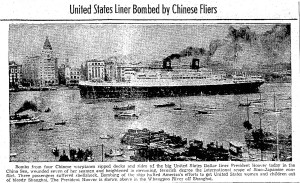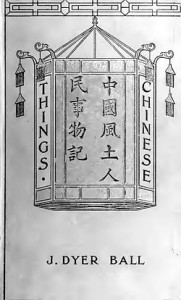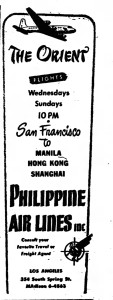Posted: December 9th, 2015 | No Comments »
I blogged yesterday about the Shanghai Tea Garden in Winnipeg. The restaurant, which featured live music and a Chinese/Western menu, was created in 1935 by the owners of the Shanghai Chop Suey House, who’d obviously made enough money to upgrade to the tea rooms. Here’s their opening announcement (you can click it on it to read the details of everything from their preferred taxi service to ice cream supplier!) and the rather nice logo of the old Chop Suey House….

Posted: December 9th, 2015 | No Comments »
The Shanghai Tea Garden on the corner of King and Pacific in Winnipeg was a big advertiser back in 1935 and looks fairly swank. They seem to have poached the Shanghai Jesters band and had a “personality girl” (a new term to me)…..

Posted: December 8th, 2015 | No Comments »
In August 1937 Japanese planes bombed the Dollar Line ship the President Hoover in Shanghai. But what interests me about this picture is two things. Firstly, just how massive the President Hoover appears when set against the Bund like that (I realise it might be a trick of the angle). We usually see ships photographed from the Bund side with less markers to measure them against. This shot shows the ship dwarfing even the Cathay Hotel and Bank of China buildings. Secondly it’s interesting to see just how far out into the river the pontoons on the Pootung (Pudong) waterfront side stretched out.

Posted: December 8th, 2015 | No Comments »
Interestingly some or other has decided to republish J Dyer Ball’s early twentieth century writings on Macao (originally published about 1905).
James Dyer Ball (1847–1919) was a sinologist born in Canton. He served in the Hong Kong Civil Service for 35 years, where he held various positions as security officer and chief interpreter. He died in 1919 in Enfield, North London (where I happen to have grown up). He was prolific as a dictionary writer for Cantonese plus all sorts of books on China (his Things Chinese remains a classic) and Macao.


Posted: December 7th, 2015 | No Comments »
…Well actually we don’t know the landlords name sadly. But imagine Tong Yu-niung’s reaction when he arrived at his clothing store in Shanghai in November 1947 to find eleven empty coffins crowding the aisles. As inflation spiralled into stagflation in Shanghai in 1947 landlords raised rents ridiculous amounts. Tong’s lease was up and his landlord wanted him gone. So, overnight, he had eleven coffins placed in the shop as a final demand – the symbolism is fairly clear I think! Whether this rather nasty eviction notice worked or not I don’t know….

Posted: December 6th, 2015 | No Comments »
Philippine Air Lines was established in February 1941 and didn’t much chance to get going until services had to be suspended for the duration of the war and the Japanese occupation until 1945. But then they were back with a twice weekly service to Manila, Hong Kong and Shanghai from San Francisco…

Posted: December 5th, 2015 | No Comments »
For those who like their Shanghai wrapped in crime and in the go-go 1990s three of Qiu Xialong’s Inspector Chen series are being dramatised on BBC Radio 4 this month…
“A new series of radio dramas, based on the novels of Qiu Xiaolong, begins on BBC Radio 4 on Saturday, 5th December at 2.30pm. Set in and around the Shanghai of the 1990s, when China was opening itself up more and more to foreign influence and trade, the stories are particularly interesting for the light they show on a society during the difficult process of change. Oh, and there’s chicanery and murder, too.
The first of the series, “Death of a Red Heroine†was dramatised by Joy Wilkinson; the second, “A Loyal Character Dancerâ€, and third, “When Red is Blackâ€, were dramatised by Qiu Xiaolong and are broadcast on the 12th & 19th December respectively. All three will remain available on the BBC iPlayer for 28 days.”
Posted: December 4th, 2015 | No Comments »
Ralph Burton Goodwin’s escape from internment in Hong Kong and his subsequent 870 mile trek to British India and freedom….nough said really!

Trapped in the depths of Japanese-held territory, it was rare for Allied prisoners of war to attempt escape. There was little chance of making contact with anti-guerrilla or underground organisations and no possibility of Europeans blending in with the local Asian populations. Failure, and recapture, meant execution. This was what Lieutenant Commander R.B. Goodwin faced when he decided to escape from the Shamsuipo PoW Camp in Kowloon, Hong Kong in July 1944 after three years of internment. With no maps and no knowledge of the country or the language, Lieutenant Commander Goodwin set out across enemy territory and war-torn China. Because of the colour of his skin he had to travel during the hours of darkness for much of what was an 870-mile journey to reach British India. Few of his fellow prisoners gave him any chance of succeeding, yet, little more than three months later, he was being transported to the safety of Calcutta. For his daring and determination Lieutenant Commander Goodwin was awarded the Order of the British Empire.








